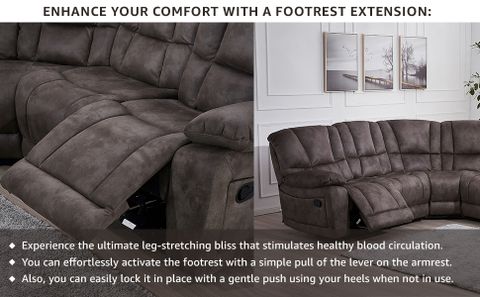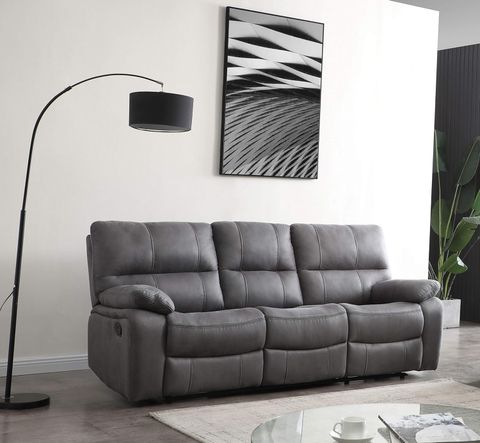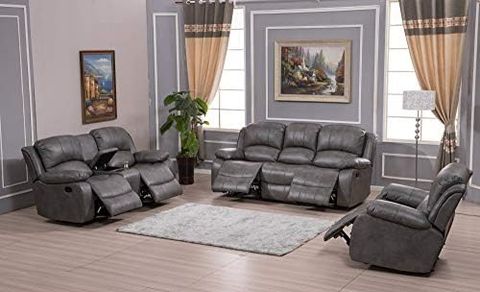Sectional sofas have come a long way since their humble beginnings. What started as simple corner seating arrangements has evolved into sophisticated design elements that define entire living spaces. These versatile pieces have transformed from functional furniture to artistic expressions that reflect our changing lifestyles and design sensibilities.
Picture this: You’re sitting in your living room, surrounded by comfortable seating that seems to flow naturally around the space. That’s the magic of sectional sofas. But how did we get here? These remarkable pieces didn’t appear overnight. They grew from necessity, evolved through cultural shifts, and now represent the pinnacle of contemporary home design. Think about it – when was the last time you saw a living room without some form of sectional seating? It’s become such a staple that we barely notice its presence anymore. Yet behind every sleek curve and perfectly placed armrest lies decades of innovation and design thinking.
Early Beginnings: Functional Foundations
The earliest forms of sectional seating emerged in the late 1800s, when homes began to feature more open floor plans. These early designs were purely practical. They were built to maximize seating capacity while fitting into awkward corners and spaces. Think of them as the original ‘multi-purpose’ furniture. They weren’t concerned with aesthetics – just functionality. The first sectionals were often made from heavy wood frames with thick, uncomfortable cushions. People didn’t sit on them for comfort – they sat there because they had to. The design philosophy was simple: if you needed more seating, make it work in whatever space you had available. These early pieces were the foundation upon which all future innovations would build.
Mid-Century Transformation: The Birth of Modern Style
The 1950s and 60s marked a turning point for sectional sofas. Designers began to experiment with new materials and bold shapes. This era introduced us to the concept of the ‘L-shaped’ sofa that many of us recognize today. The mid-century modern movement brought clean lines and organic forms that made these pieces look less like utilitarian furniture and more like art. Suddenly, people were excited about having a sofa that looked good as well as served a purpose. The introduction of synthetic fabrics and new manufacturing techniques meant that designers could create more interesting shapes and textures. What started as simple corner seating became a canvas for creativity. The focus shifted from merely providing seating to creating focal points within living spaces.
The 1970s and 80s: Bold Statements and Cultural Shifts
During these decades, sectional sofas became more than just furniture – they became statements about lifestyle and taste. The 70s brought earth tones, bold patterns, and oversized proportions that reflected the decade’s love of comfort and excess. Designers started thinking about how these pieces could transform entire rooms. The 80s took this further with geometric shapes and vibrant colors that pushed boundaries. This period saw the rise of the ‘family room’ concept, where the sectional became the centerpiece of social gatherings. The sofas of this era were often the most expensive items in a room, reflecting their status as both functional furniture and design investments. People wanted pieces that would last, that would make a statement, and that would bring families together.
Technology and Materials Revolution
The 1990s and 2000s brought a technological revolution to sofa design. New materials like memory foam, performance fabrics, and innovative frame construction changed everything. Designers could now create pieces that were both comfortable and durable. The introduction of modular systems allowed consumers to customize their seating arrangements based on their specific needs. These advances meant that sectionals could be designed for small apartments or large homes, for families with children or elderly members. The ability to add or remove sections created flexibility that hadn’t existed before. Imagine having a sofa that could grow with your family or shrink when you needed to rearrange your space. That’s what modern technology made possible.
Contemporary Design Philosophy: Form Meets Function
Today’s sectional sofas represent the perfect balance between form and function. Modern designers approach these pieces with the understanding that they must serve multiple purposes while maintaining visual appeal. The focus has shifted toward creating furniture that enhances rather than dominates a space. Current designs emphasize clean lines, neutral colors, and versatile configurations that can adapt to various interior styles. Smart materials and sustainable practices have become important considerations. The modern sectional isn’t just about looking good – it’s about being good for people and the planet. Designers now think about ergonomics, accessibility, and how their pieces will age over time. This holistic approach has resulted in some truly remarkable furniture that serves everyone in the household.
Future Trends: Where Are We Headed?
Looking ahead, sectional sofa design continues to evolve with changing lifestyles and technologies. The rise of remote work has created demand for more flexible seating solutions that can double as home offices or entertainment centers. Sustainability remains a major driving force, with designers exploring recycled materials and eco-friendly production methods. Smart furniture features, like integrated charging ports and lighting systems, are becoming more common. The trend toward minimalism means that future designs will likely focus even more on clean, simple lines. There’s also growing interest in pieces that can transform or adapt to different situations. The next generation of sectionals might be able to change shape or size with the push of a button.
The journey from basic corner seating to today’s sophisticated sectionals tells us something profound about human nature. We’ve always sought comfort, but we’ve also always wanted our spaces to reflect who we are. Sectional sofas have grown from simple necessity to complex expressions of personal style and social connection. They’ve adapted to our changing lives, our evolving tastes, and our increasing understanding of what makes a home truly livable. As we continue to redefine what living spaces should be, these versatile pieces will undoubtedly continue to evolve. Whether you prefer the classic look of a traditional L-shaped design or the cutting-edge features of a modern smart sofa, one thing remains constant: the fundamental human desire to create spaces where we feel both comfortable and inspired. The story of sectional sofas is far from over, and each new design adds another chapter to this ongoing narrative of comfort, creativity, and human connection.














